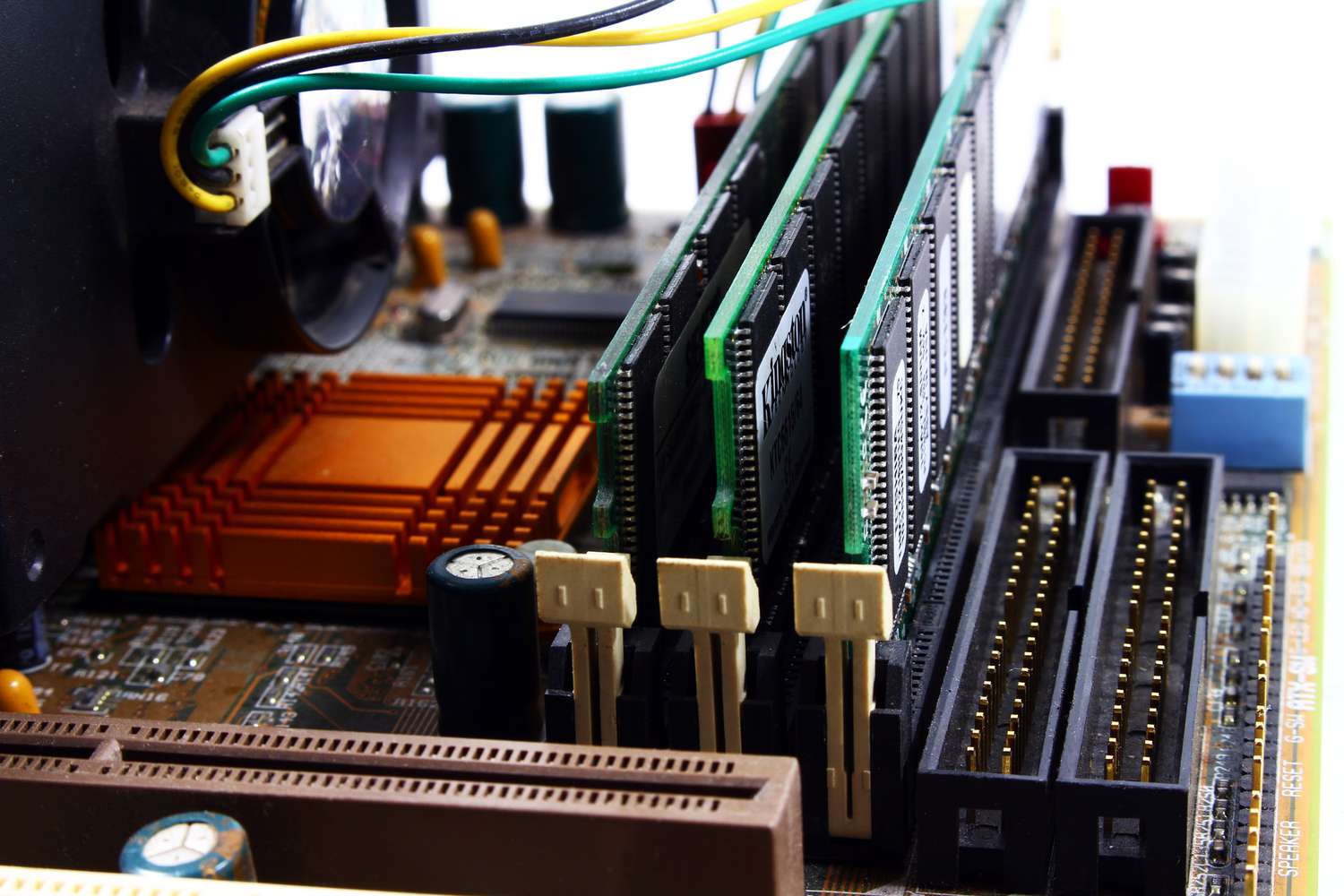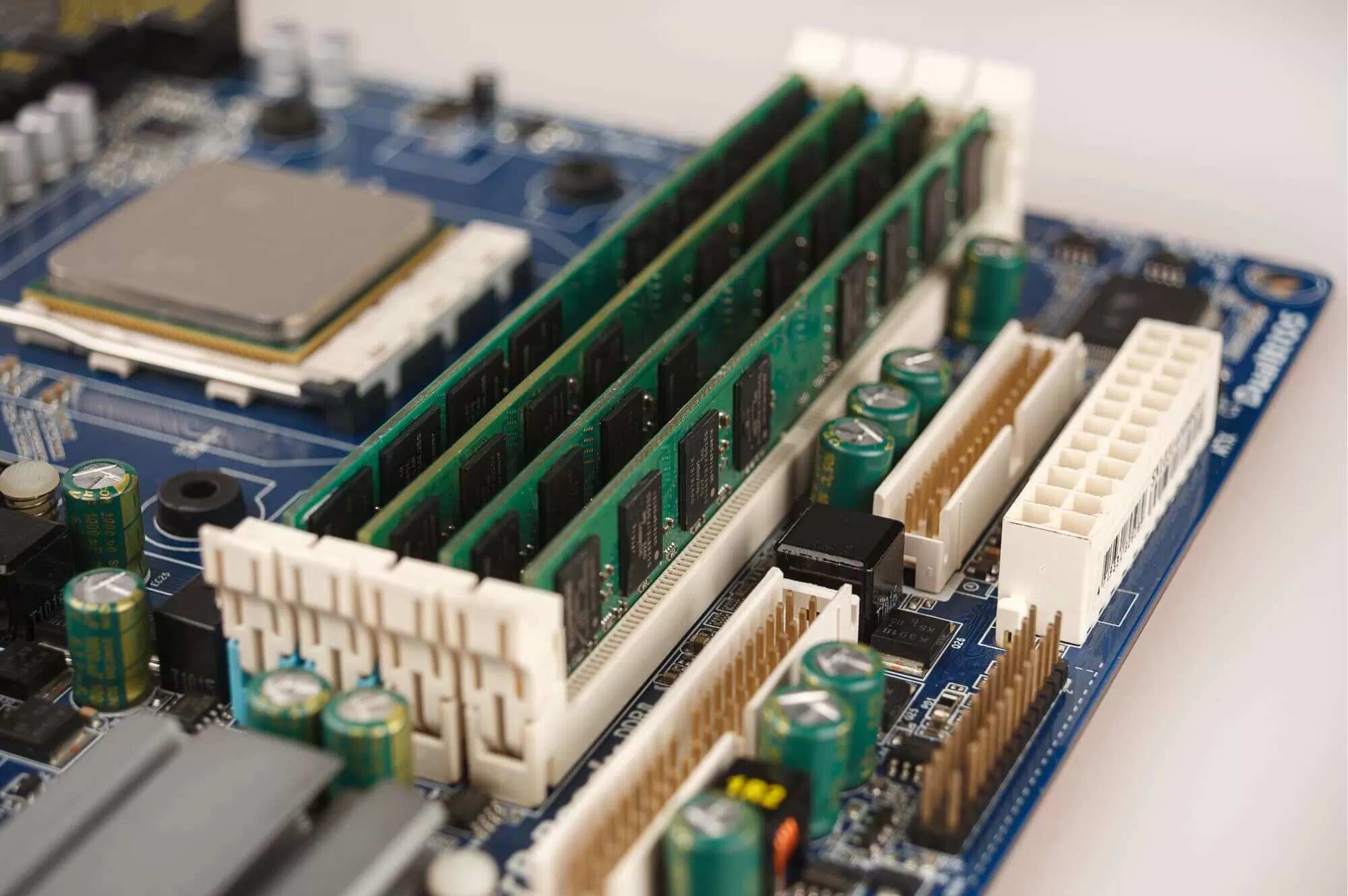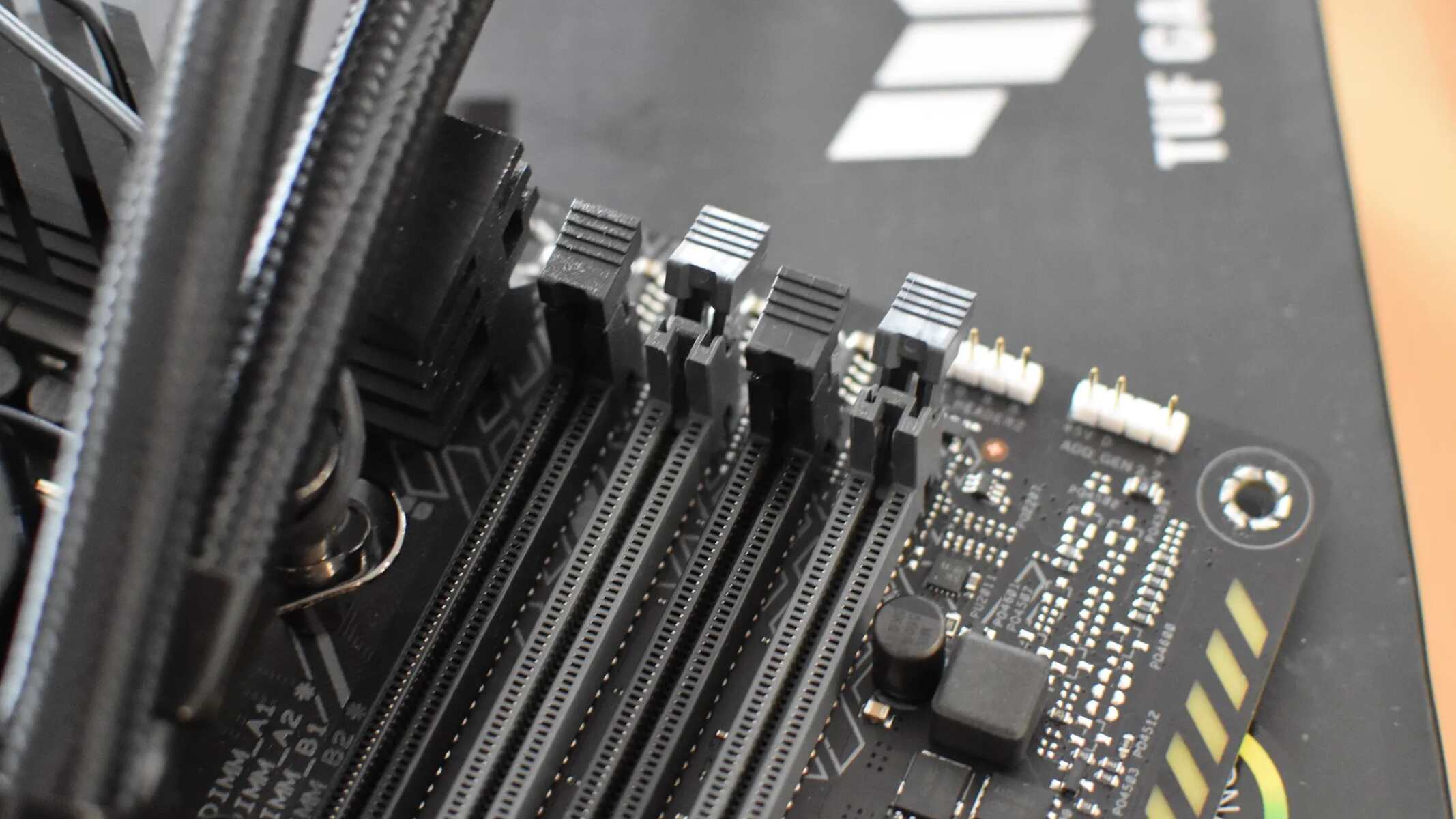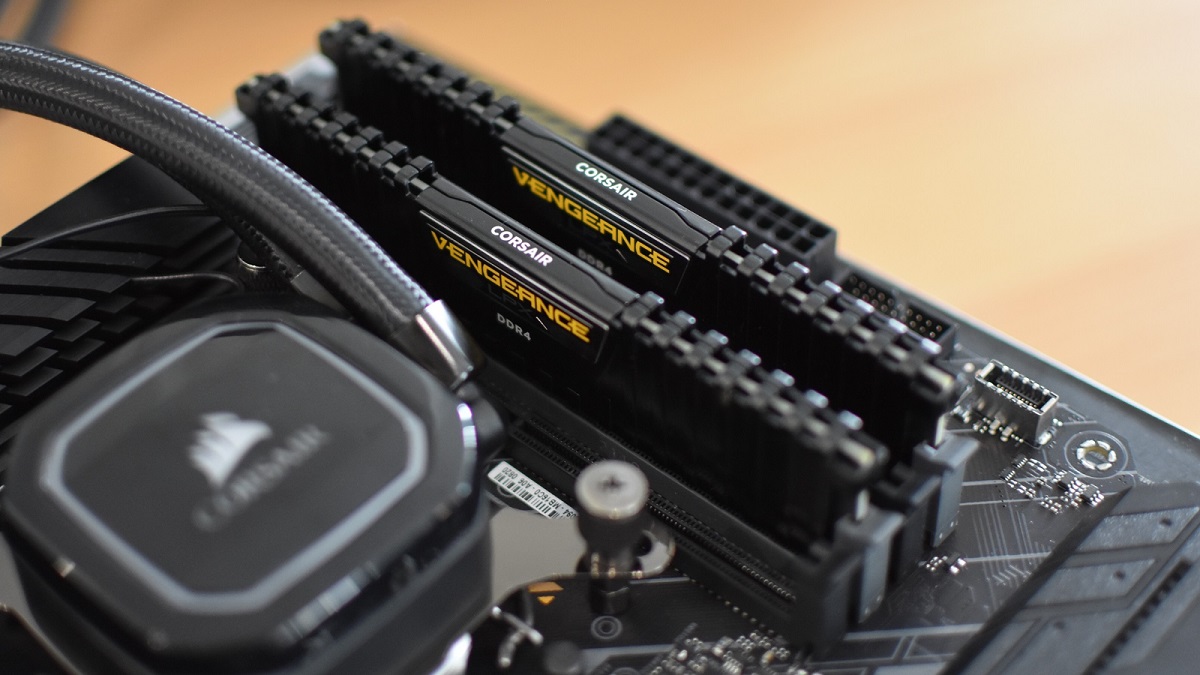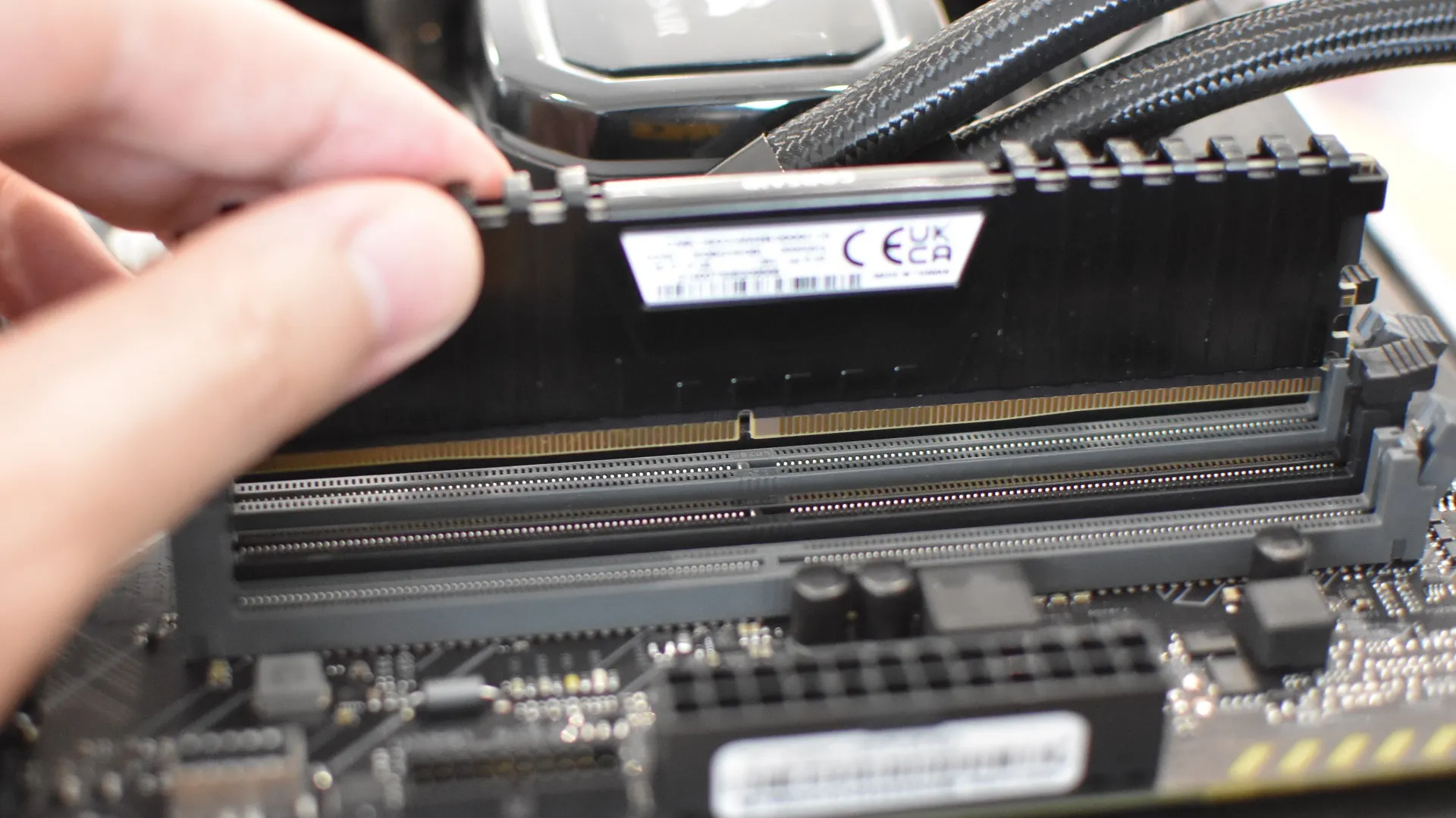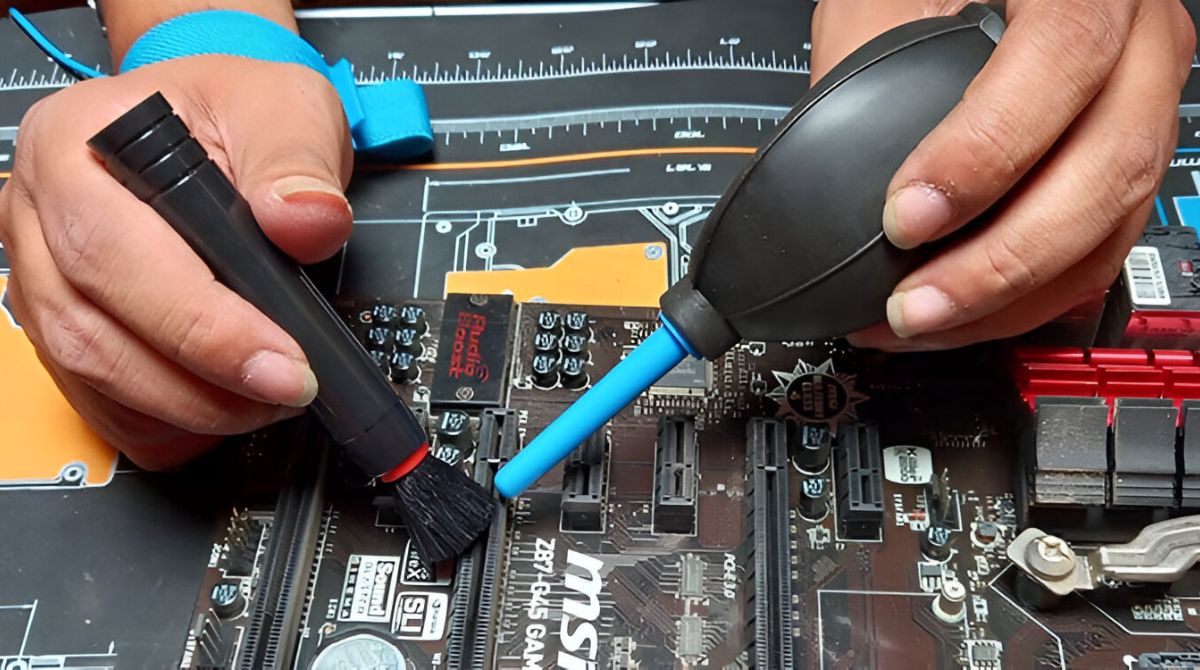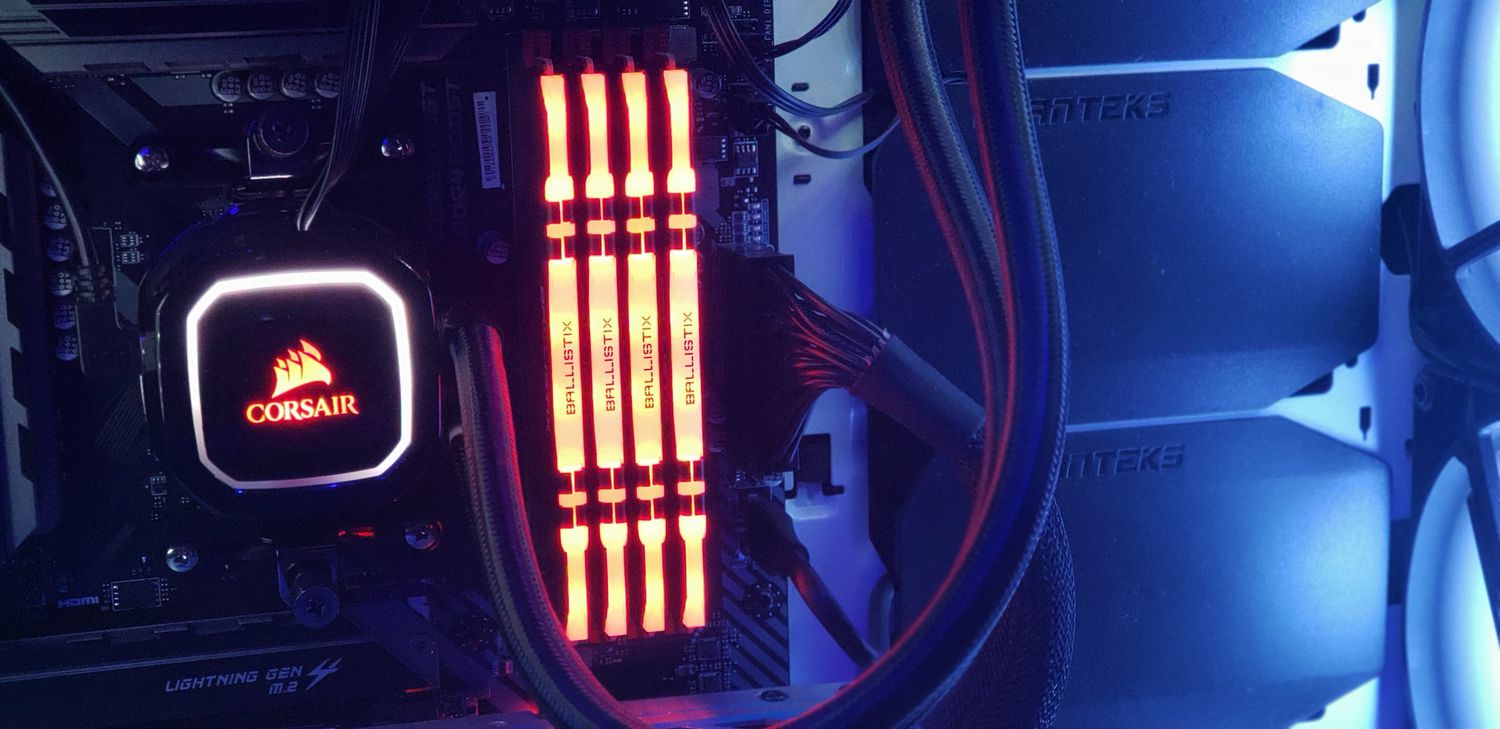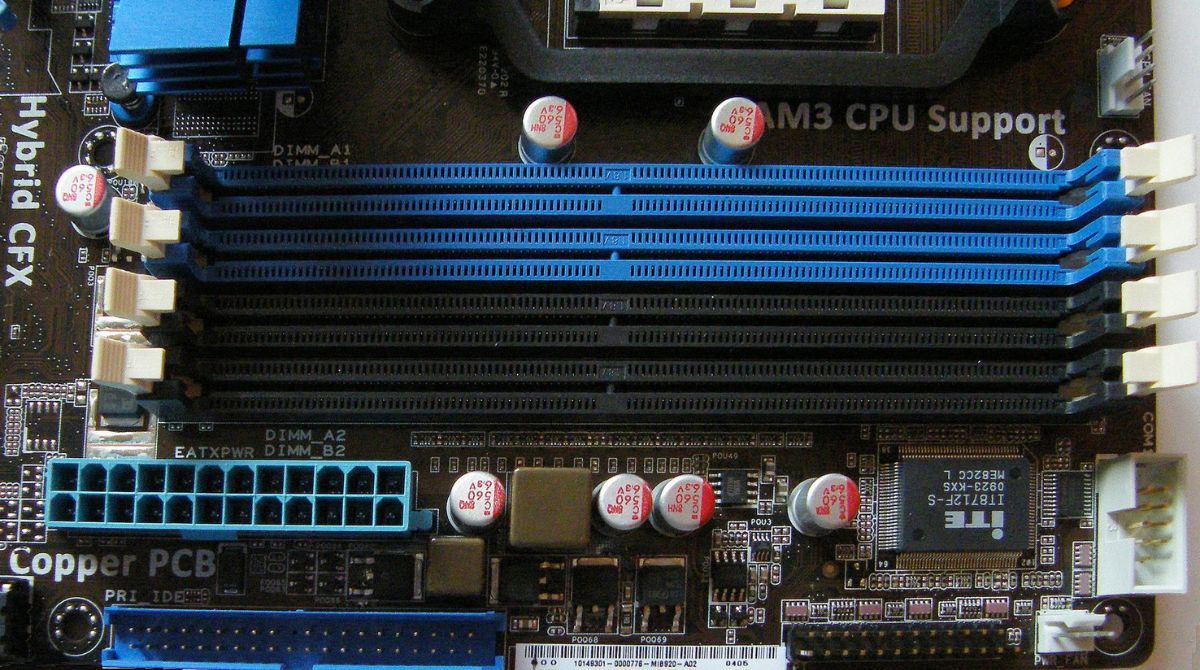The Importance of Proper RAM Slot Placement
When it comes to installing RAM modules in your computer, proper slot placement is crucial for optimal performance. This may seem like a trivial matter, but incorrectly installing your RAM can lead to compatibility issues, decreased system performance, and even system instability. To ensure your computer operates at its best, it’s essential to understand the importance of properly placing your RAM modules.
One of the primary reasons for proper RAM slot placement is the utilization of dual-channel memory configuration. Most modern motherboards support dual-channel memory, which provides faster data transfer rates between the RAM and the CPU. This configuration requires placing the RAM modules in specific slots to take advantage of the increased bandwidth and enhance overall system performance. If the RAM modules are installed in the wrong slots, the system will revert to a single-channel configuration, limiting the data transfer speed.
Furthermore, proper slot placement also ensures compatibility with your motherboard. Different motherboards have varying slot configurations, and installing the RAM modules incorrectly may result in them not being recognized by the system. This can lead to the system failing to boot or only recognizing a portion of the installed RAM, reducing the overall memory capacity of your computer.
Checking the motherboard manual is an essential step in determining the correct RAM slot placement. The manual provides detailed information on the supported memory configurations and the recommended slots for installing the RAM modules. It’s essential to follow these guidelines to prevent any compatibility issues and ensure that your system operates smoothly.
In addition to consulting the motherboard manual, another method for identifying the correct RAM slots is through color coding. Many motherboards feature color-coded RAM slots to indicate the recommended configurations. This helps users easily identify which slots to populate first for dual-channel memory setups. Typically, slots of the same color should be populated first to take advantage of dual-channel functionality.
Proper RAM slot placement is also crucial when mixing different RAM modules. If you plan to install RAM modules with different speeds or capacities, it’s essential to place them in the appropriate slots to prevent any compatibility issues. Placing modules with different specifications in the same channel can lead to performance inconsistencies and potential system instability.
Investing time in understanding proper RAM slot placement is essential for maximizing system performance and compatibility. It ensures that your computer operates at its optimal capacity by utilizing dual-channel memory and preventing any compatibility issues. By referring to the motherboard manual and considering color coding, you can easily determine the correct slots for installing your RAM modules. Remember, a small effort in correctly placing your RAM can result in significant improvements in your system’s overall performance.
Common RAM Slot Configurations
Understanding the different RAM slot configurations is essential for proper installation and optimal performance. While the exact configurations may vary depending on the motherboard, there are a few common setups worth noting. Let’s take a closer look at some of the most prevalent RAM slot configurations:
1. Dual-Channel Memory Configuration: This is the most common configuration and is supported by the majority of modern motherboards. In this setup, the RAM slots are divided into two channels, typically labeled as A and B. To take advantage of the dual-channel functionality, you need to install matching pairs of RAM modules in the corresponding slots of each channel. For example, if you have four RAM slots, you would install two modules in slots A1 and B1, and the other two modules in slots A2 and B2. This configuration provides increased memory bandwidth and improves overall system performance.
2. Single-Channel Memory Configuration: Some older or entry-level motherboards may only support a single-channel memory configuration. In this setup, you can install RAM modules in any available slot without adhering to specific pairs. While this configuration doesn’t provide the same performance benefits as dual-channel memory, it still allows you to expand your system’s memory capacity.
3. Quad-Channel or Octa-Channel Memory Configuration: High-end motherboards designed for enthusiasts or professionals may feature four or even eight RAM slots, commonly found in workstation or server systems. These boards support quad-channel or octa-channel memory configurations, providing even higher memory bandwidth for demanding tasks. The specific slot configurations for these setups can vary, so consulting the motherboard manual is crucial to ensure correct placement.
4. Mixed Memory Configuration: Some motherboards support mixed memory configurations, allowing you to install different capacities or speeds of RAM modules. However, it’s important to follow the guidelines provided by the motherboard manufacturer to ensure compatibility and avoid any performance issues. Mixing different RAM modules in an unsupported configuration can lead to reduced performance or system instability.
It’s crucial to check your motherboard’s documentation to determine the supported RAM slot configurations and recommended installation guidelines. The motherboard manual provides specific instructions on which slots to populate first for dual-channel configurations or any particular requirements for mixed memory setups.
By understanding these common RAM slot configurations, you can make informed decisions when installing RAM modules in your computer. Proper configuration not only ensures compatibility but also allows you to take full advantage of the memory bandwidth, maximizing your system’s performance for smooth multitasking, gaming, or resource-intensive applications.
Dual-Channel Memory Configuration
Dual-channel memory configuration is a popular setup that provides enhanced memory performance by utilizing two memory channels simultaneously. This configuration improves data transfer rates between the RAM and the CPU, resulting in improved system responsiveness and overall performance. Understanding how to set up dual-channel memory is crucial for maximizing the benefits of your RAM modules.
In a dual-channel configuration, the memory slots on the motherboard are divided into two channels, usually labeled as Channel A and Channel B. Each channel consists of two or more memory slots. To take advantage of dual-channel functionality, you need to install matching pairs of RAM modules in the corresponding slots of each channel.
For example, if you have four RAM slots labeled A1, A2, B1, and B2, you would install two identical RAM modules in slots A1 and B1, and the other two identical modules in slots A2 and B2. The modules should have the same capacity, speed, and timings for optimal performance.
Proper placement of RAM modules is important to ensure that they are properly synchronized and can transmit data more efficiently. When data is accessed by the CPU, it can be divided and sent simultaneously through the two channels, effectively doubling the data transfer rate compared to a single-channel configuration.
In addition to increased bandwidth, dual-channel memory configuration also improves system stability. By distributing the workload across two memory channels, the overall system temperature is reduced, preventing potential overheating that can occur when relying on a single memory channel for intense data processing.
While dual-channel memory configuration provides significant performance benefits, it’s important to note that all the installed memory modules need to be the same capacity for optimal operation. If different-sized memory modules are installed, the system will only use the smaller capacity across all modules, resulting in wasted memory space.
To determine if your system is properly configured in a dual-channel mode, you can check the BIOS or use benchmarking tools that provide information about the memory configuration. These tools can verify if the system recognizes and operates the memory modules in dual-channel mode.
Overall, setting up your memory modules in a dual-channel configuration offers a noticeable improvement in system performance. By following the recommended installation guidelines and ensuring that matched pairs of RAM modules are installed, you can effectively harness the increased memory bandwidth and achieve a more responsive and efficient computing experience.
Single-Channel Memory Configuration
Single-channel memory configuration is a memory setup commonly found in older or entry-level computers. Unlike dual-channel memory, which utilizes two memory channels simultaneously, single-channel memory uses only a single memory channel. While it may not offer the same level of performance as dual-channel configurations, it still allows you to expand your system’s memory capacity.
In a single-channel memory configuration, you can install RAM modules in any available memory slot on the motherboard without adhering to specific pairs or channel requirements. This flexibility allows for easier upgrades or customization based on your specific needs.
However, it’s important to note that operating in single-channel mode may result in reduced memory bandwidth and slower data transfer rates compared to dual-channel configurations. This means that the system’s overall performance may be slightly compromised, especially in scenarios that involve heavy multitasking, resource-intensive applications, or gaming.
It’s worth mentioning that some modern motherboards still support dual-channel memory configurations, even if they have a single memory channel populated. This means that you can start with a single RAM module and later upgrade to a dual-channel configuration by adding a matching pair of modules in the appropriate slots.
For optimal performance in a single-channel configuration, it’s recommended to use RAM modules with matching capacity, speed, and timings. Mixing different capacities or speeds may cause issues or potentially hinder system stability.
Despite its limitations, single-channel memory configuration is still a viable option for basic computing tasks or systems with budget constraints. It allows you to increase your system’s memory capacity without the need for specific module pairings or restrictions.
Before deciding on a single-channel configuration, consider your specific needs and requirements. If you primarily engage in light office work, web browsing, or media consumption, single-channel memory may offer sufficient performance. However, if you require a higher level of multitasking capability or plan to run more demanding applications, it may be worth considering upgrading to a dual-channel configuration.
Ultimately, the choice between single-channel and dual-channel memory configuration depends on your budget, system requirements, and intended usage. Assessing your needs and understanding the trade-offs between performance and cost will help you make an informed decision when setting up your memory configuration.
Checking the Motherboard Manual
When it comes to installing RAM modules and determining the correct slot placement, one of the most reliable sources of information is the motherboard manual. The manual provides detailed documentation specific to your motherboard model, including information on RAM slot configuration and recommended installation guidelines.
Every motherboard model has its own unique layout and specifications for RAM placement. The motherboard manual will outline the supported memory configurations, including the number of slots, channel layouts, and any specific requirements for dual-channel or mixed memory setups.
Consulting the motherboard manual is particularly important if you are unsure about the proper slot placement or if you are using a motherboard with specialized features or configurations. It eliminates the guesswork and ensures that you are installing the RAM modules correctly for optimal performance and system stability.
The manual will typically provide a diagram or labeled illustration of the RAM slots on the motherboard. It will indicate the specific slot numbers (e.g., DIMM1, DIMM2) or labels corresponding to each slot. This helps you identify the proper slots to populate based on the desired memory configuration.
Be sure to follow the instructions in the manual closely. It may provide guidelines on which slots to populate first for dual-channel memory setups or which order to install the RAM modules in for proper synchronization. It may also specify any limitations or compatibility considerations when mixing different types or capacities of RAM modules.
Not only does the motherboard manual provide information on RAM slot placement, but it also covers other essential details about your motherboard’s features, connectors, BIOS settings, and troubleshooting tips. It’s a valuable resource that can assist you in understanding and maximizing the capabilities of your motherboard.
If you no longer have the physical manual, you can usually find a digital version on the motherboard manufacturer’s website. These digital copies are easily accessible and searchable, allowing you to quickly find the information you need.
Checking the motherboard manual should be the first step when installing RAM modules or any other hardware components. By following the manufacturer’s guidelines, you can ensure that your RAM is installed correctly, preventing any compatibility issues and optimizing your system’s memory performance.
Identifying RAM Slot Color Coding
Many motherboards feature color-coded RAM slots, which can be a helpful visual aid when installing RAM modules. The color coding helps users identify the recommended slot configurations for optimal performance, especially in dual-channel memory setups.
The specific color coding scheme can vary between motherboard manufacturers, but there are some common trends that can be generalized:
1. Matching Colors: Motherboards often use matching colors to indicate the pairing of slots for dual-channel memory. For example, slots of the same color may need to be populated first to take advantage of dual-channel functionality. This ensures that the memory modules are installed in corresponding slots, allowing for synchronized data transfer between the RAM and the CPU.
2. Different Colors: Some motherboards use different colors to distinguish between different memory channels. For instance, slots of one color may belong to Channel A, while slots of another color belong to Channel B. This helps users identify which slots to populate for dual-channel memory configuration.
It’s important to note that the color coding used on your specific motherboard may be different, so it’s best to refer to the motherboard manual for accurate information. The manual will provide detailed instructions on how the slots are color-coded and which slots to populate based on the desired memory configuration.
When installing RAM modules, make sure to align them with the corresponding color-coded slots on the motherboard, following any guidelines provided in the manual. This ensures that the modules are installed in the proper channels or paired slots for optimal performance.
If your motherboard does not have color-coded slots, you can use other visual cues to identify the proper slot placement. Some motherboards may have labels or markings next to the slots indicating the slot sequence or recommended configuration. Again, consulting the motherboard manual is crucial to clarify any uncertainties.
While color-coded RAM slots are a helpful feature, they should not be solely relied upon for proper installation. It is essential to combine this information with the guidance provided in the motherboard manual to ensure correct placement and configuration. Following the recommended guidelines will result in properly installed RAM modules and maximize system performance.
In summary, identifying the color coding used on your motherboard’s RAM slots can simplify the installation process, specifically for dual-channel memory configurations. By referring to the motherboard manual and aligning the RAM modules with the corresponding color-coded slots, you can ensure proper placement and enhance the memory performance of your system.
Maximizing Performance with RAM Slot Placement
The placement of RAM modules in your computer’s memory slots can have a significant impact on overall system performance. By understanding the principles of RAM slot placement and following recommended guidelines, you can maximize the performance and efficiency of your system’s memory.
One of the key factors to consider when optimizing RAM slot placement is the utilization of dual-channel memory configuration. Dual-channel configuration requires the installation of matching pairs of RAM modules in specific slots to take advantage of increased memory bandwidth. This setup allows simultaneous access and data transfer between the RAM and the CPU, resulting in improved system response times and overall performance.
When populating the memory slots for a dual-channel configuration, it’s important to follow the guidelines provided by your motherboard manufacturer. The motherboard manual will indicate which slots to populate first for dual-channel functionality. Typically, these slots are color-coded or labeled for easy identification.
In addition to dual-channel configurations, it’s crucial to understand the limitations of your motherboard when it comes to mixed memory setups. Mixing different types, capacities, or speeds of RAM modules can lead to reduced performance or compatibility issues. Consult your motherboard manual to determine if mixing modules is supported and any specific guidelines for proper slot placement.
Another consideration for maximizing performance is the position of the RAM modules within the slots themselves. It’s generally recommended to install the RAM modules in the slots furthest from the CPU and populate the slots closest to the CPU first. This ensures optimal signal routing and minimizes any potential interference from other components on the motherboard.
Proper airflow around the RAM modules is also important, especially in systems with high-performance components that generate a significant amount of heat. Adequate spacing between the RAM modules can help maintain lower operating temperatures and prevent overheating, which can affect the stability and performance of the memory modules.
While proper RAM slot placement is crucial, it’s important to note that the benefits of optimizing slot configuration may vary depending on the specific workload and applications you use. Memory-intensive tasks, such as video editing, 3D rendering, or running multiple virtual machines, are more likely to benefit from optimized RAM slot placement than lighter tasks or basic computing activities.
Lastly, periodically checking for BIOS updates for your motherboard can also contribute to maximizing performance. Motherboard manufacturers often release BIOS updates that include optimizations and improvements for memory compatibility and performance. Updating the BIOS can ensure that your system benefits from the latest enhancements.
Maximizing performance with RAM slot placement involves understanding dual-channel memory configuration, adhering to recommended guidelines from the motherboard manufacturer, and considering other factors such as module positioning and airflow. By following these principles, you can optimize the performance of your system’s memory, resulting in improved responsiveness and overall efficiency.
Mixing Different RAM Modules
While it is generally recommended to use identical RAM modules for optimal performance, there may be instances where you need to mix different RAM modules in your computer. Mixing RAM modules can refer to using modules with different capacities, speeds, or even from different manufacturers. Although mixing RAM modules is possible, there are certain considerations and limitations to keep in mind.
One of the main factors to consider when mixing different RAM modules is compatibility. RAM modules with different capacities or speeds may not work well together, leading to stability issues or reduced performance. It’s essential to consult the motherboard manual or the manufacturer’s specifications to determine if mixing modules is supported and any specific guidelines for proper slot placement.
When mixing different RAM modules, the system will typically default to the specifications of the slowest module. For example, if you have a DDR4-3200 module and a DDR4-2400 module, the system will operate at the slower DDR4-2400 speed. This means that the higher-speed module will be underutilized, and you won’t be able to take full advantage of its capabilities.
Another consideration when mixing RAM modules is the Dual Data Rate (DDR) standard. DDR modules from different generations, such as DDR3 and DDR4, are not compatible and cannot be mixed. Additionally, DDR modules with different voltages may not work together, as the motherboard and memory controller need to support the specific voltage requirements.
In some cases, the motherboard’s memory controller may automatically adjust timings, voltages, and speeds to accommodate the different RAM modules. However, this can potentially introduce instability or compatibility issues, leading to system crashes or errors. Hence, it’s important to thoroughly test the system’s stability when mixing different RAM modules.
If you do decide to mix RAM modules, it’s generally recommended to pair modules with similar capacities, speeds, and timings, if possible. This helps minimize potential compatibility issues and ensures better performance. However, keep in mind that even with similar specifications, there is still a risk of compatibility problems due to differences in manufacturing or architectural differences between modules.
It’s worth noting that mixing different RAM modules is typically not recommended for systems that require high levels of stability and performance, such as gaming PCs or workstations. For these systems, it’s best to use identical RAM modules to ensure optimal and consistent operation.
In summary, while mixing different RAM modules is possible, it is important to consider compatibility, speed limitations, and potential stability issues. It’s recommended to consult the motherboard manual or manufacturer’s specifications for guidelines specific to your system. If stability and performance are a priority, it’s best to opt for identical RAM modules to ensure optimal operation.
Troubleshooting RAM Slot Issues
RAM slot issues can be frustrating and can impact system performance and stability. If you encounter problems with your RAM slots, here are some troubleshooting steps you can take to diagnose and resolve the issues:
1. Clean the RAM slots: Dust or debris in the RAM slots can interfere with the connection between the RAM module and the slot. Power off your computer, remove the RAM modules, and use compressed air or a soft brush to clean out any dust or debris from the slots.
2. Reseat the RAM modules: Sometimes, a loose connection can cause issues with RAM slots. Carefully remove and reinsert the RAM modules, ensuring they are securely seated in the slots. Apply gentle pressure evenly on both sides of the module until it clicks into place.
3. Test the RAM modules individually: If you suspect a specific RAM slot is causing the problem, test each RAM module individually in different slots. This will help identify whether the issue lies with the RAM module or the slot itself. If a specific slot consistently causes errors or issues, it may indicate a faulty RAM slot.
4. Check for physical damage: Inspect the RAM slots for any physical damage, such as bent pins or debris blocking the connection. Be cautious when handling the slots and avoid applying excessive force.
5. Update BIOS and drivers: Outdated BIOS firmware or outdated drivers can cause compatibility issues with RAM modules or impact the performance of the RAM slots. Check for BIOS updates from your motherboard manufacturer’s website and update them if necessary. It’s also a good idea to update your chipset drivers and any relevant drivers for optimal compatibility.
6. Run a memory diagnostic test: Use a memory diagnostic tool, such as Windows Memory Diagnostic or Memtest86, to check for any errors or issues with your RAM modules. These tools verify the integrity of your RAM and can help pinpoint any possible problems.
7. Contact technical support: If you have tried the above troubleshooting steps and are still experiencing issues with your RAM slots, it may be necessary to contact technical support for further assistance. They can provide additional guidance or initiate a warranty claim if the RAM slots are determined to be faulty.
Remember to always handle RAM modules and slots with care, as they are delicate components. Avoid static discharge by grounding yourself before touching any internal components of your computer.
Troubleshooting RAM slot issues can take some time and patience, but it’s essential to ensure the stability and performance of your system. By following these steps, you can identify and resolve any issues with your RAM slots and enjoy smooth operation once again.
Frequently Asked Questions about RAM Slot Usage
Here are some frequently asked questions related to RAM slot usage, along with their answers:
1. What is the maximum amount of RAM my motherboard can support?
The maximum amount of RAM supported by your motherboard will depend on its specific model and chipset. Consult your motherboard’s manual or visit the manufacturer’s website for detailed information on the supported RAM capacity.
2. Can I mix different capacities or speeds of RAM modules?
Mixing different capacities or speeds of RAM modules is possible, but it’s generally recommended to use identical modules for optimal performance. Different modules may work together, but the system will typically default to the specifications of the slower module, potentially reducing overall performance.
3. What is the purpose of color-coded RAM slots?
Color-coded RAM slots help users identify the recommended slot configurations, especially in dual-channel memory setups. Matching colors or different colors indicate the slots that should be populated first for optimal performance.
4. Can I use the empty RAM slots on my motherboard?
Yes, you can use the empty RAM slots on your motherboard to expand your system’s memory capacity. However, it’s important to consider the specifications and limitations outlined by your motherboard’s manual, such as dual-channel configurations or maximum supported memory capacity.
5. What happens if I install RAM modules in the wrong slots?
Installing RAM modules in the wrong slots can lead to compatibility issues, reduced performance, or even system instability. Specific configurations, such as dual-channel memory, require proper slot placement for optimal operation. Consult your motherboard’s manual for guidance on the correct slot configuration.
6. How can I check if my RAM modules are operating in dual-channel mode?
You can check if your RAM modules are operating in dual-channel mode through the BIOS or by using benchmarking tools that provide information on the memory configuration. These tools can verify if the system recognizes and utilizes the RAM modules in a dual-channel configuration.
7. Can I mix RAM modules from different manufacturers?
While mixing RAM modules from different manufacturers may be possible, it’s generally recommended to use identical modules for compatibility and stability. Different manufacturers may use slightly different specifications or manufacturing processes that can result in compatibility issues.
8. Can I upgrade my RAM without replacing all the existing modules?
Yes, you can upgrade your RAM without replacing all the existing modules. In most cases, you can add additional RAM modules to the available slots. However, ensure that the new modules have the same specifications or are compatible with the existing modules to avoid compatibility issues.
9. Can I install more RAM than what the motherboard manual specifies?
It’s generally recommended to follow the maximum RAM capacity specified in the motherboard manual. While it may be technically possible to install more RAM, the motherboard’s memory controller may limit the total amount of accessible memory or lead to stability issues.
10. How often should I clean or reseat the RAM modules in the slots?
Cleaning or reseating the RAM modules is generally not required on a regular basis unless you suspect a specific issue. However, if you are experiencing problems with your RAM or notice signs of dust or debris in the slots, it’s worth cleaning or reseating the modules to ensure a reliable connection.
Understanding the proper usage and configuration of RAM slots is crucial for maximizing system performance and stability. By following the recommended guidelines and consulting your motherboard’s manual, you can make informed decisions regarding RAM slot usage and optimize your computer’s memory setup.







